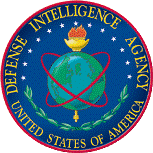United States Department of Defense
Date of this Version
1946
Document Type
Article
Abstract
During World War II, the Ordnance Department was one of the army technical services. There were a number of technical services including the Chemical Warfare Service, the Army Medical Department, the Corps of Engineers, the Quartermaster Corps, the Signal Corps, and the Transportation Corps. The technical services were bureaus providing weapons, equipment, and services to the Army. They managed the careers of officers in their corresponding branches, and organized special military units. They also ran schools to train individual and military units in their specialties.
During World War II the emphasis of technical intelligence was foreign weapons and equipment. The technical services studied weapons and equipment analogous to the weapons and equipment which each provided for the US armed forces. According to this history the “…Ordnance Department … has the entire responsibility for providing the fighting troops with such items as bombs, rockets, … guided missiles…, proximity fuses... [and more] prosaic ….Ordnance items like machine guns, tanks, trucks, pistols, rifles, antiaircraft… guns…, aircraft armor, [and] artillery, together with all the ammunition and fire control for those."
In one sense, this is a history of the invention of technical intelligence. During the war the importance of studying of foreign weapons and equipment became apparent, and procedures were developed for collecting materiel and evaluating it and for disseminating processed intelligence. This part of the history describes technical intelligence efforts in the continental United States and provides summaries of ordnance technical intelligence efforts in the various theaters of war. Interestingly, the various theaters of war provided good laboratories for development of technical intelligence procedures because the commander and his staff in each theater were free to organize the technical intelligence effort in a way that seemed best. The effectiveness of the various efforts can be compared.
The orders and circulars show the measures adopted by the army to ensure effective collection of new enemy equipment and efficient production of technical intelligence. Many applied to all of the technical services. Generally those directives supplemented previously published manuals which were totally inadequate for dealing with the evolving situation.
Glossary
Some useful terms to know are:
Army Service Forces (ASF) was a short-lived military command which included all of the technical services and some other activities. The ASF was headed by a general who reported to the Chief of Staff. The ASF was analogous to the Army Air forces and the Army Ground Forces. The Ordnance Department may be referred to as the “Ordnance Department, ASF,…”
Ordnance Department Orders obviously have a similar function to a general order in other parts of the army. They were directive in nature, general in application, and permanent in duration.
Training circulars were used to promulgate new doctrine and to make minor changes to Field Manuals and Technical manuals or other training literature.
A circular is a type of order. It contains information of a general but temporary nature.
Included in
Defense and Security Studies Commons, Military and Veterans Studies Commons, Other Engineering Commons, Peace and Conflict Studies Commons, Soviet and Post-Soviet Studies Commons



Comments
(1) This is a digital copy of a typewritten history prepared shortly after World War II. This history is a working document which was apparently not published. Parts of the digital copy are not legible.
(2) The document copied was loaned to Robert Bolin by the US Army Military History Institute.
The section on publicity was not copied.